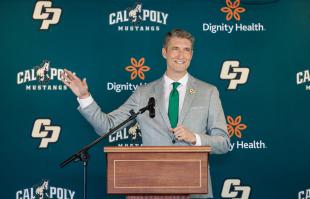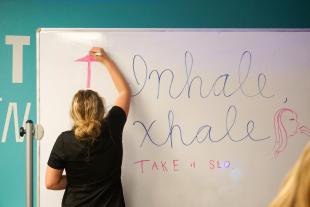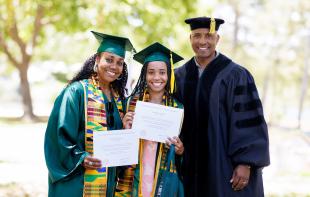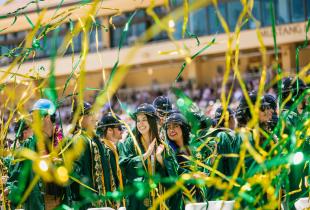'I'm Graduating With a Solid Foundation.' How This Master's Program Known for In-Person Instruction Went Virtual
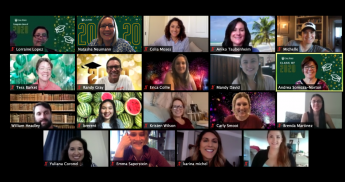
Andrea Somoza Norton and Natasha Neumann, who teach a master’s degree program together, had a good rhythm going with their cohort.
The pair, associate professors in the School of Education, co-teach the Educational Leadership Administration Program, a one-year course that lasts from September to July. Some students in the program chose it specifically for the in-person experience.
But in March, the coronavirus pandemic forced a shift to virtual learning.
“When we had to move online, those voices came up again, of students telling us, ‘I’m really hesitant, I’m nervous, I didn’t want to do online,’” Neumann said. “Andrea and I had to stop and think about how to transition them and keep the community we had established.”
So Neumann and Somoza Norton held an online orientation for the spring quarter, going through the different tools on Zoom and giving their students an updated guide on the norms for the online class, like a code of conduct.
“We wanted to make sure they were okay and we wanted to hear their reservations about online learning so we could address them,” Neumann said.
“Changing that mindset is important,” Somoza Norton said. “You can still Learn by Doing online.”
A major component, in light of the pandemic, was making sure students in the program were comfortable using virtual technology not just in a classroom setting, but in other real-world applications, such as teaching parents how to use Google Classroom.
“Moving forward, school districts may continue to be online or a hybrid of online and face-to-face instruction,” Neumann said. “Our online candidates are up to the task of understanding how to do this and training other teachers to do it.”
The instructors decided to start each class with a “temperature test,” taking stock of how their students were feeling. Part of the temperature check involved a group activity where the professors would play a song, read a poem or show an image to the class, then discuss how everyone related to the activity that day.
“You have to create that camaraderie and continue that respect for your peers in order to feel good,” Somoza Norton said. “That was just foundational.”
The course remained synchronous online, meaning that the class met virtually every week for a set period of time. Somoza Norton and Neumann viewed it as a commitment to what everyone signed up for.
“We felt really strongly about wanting to maintain our community, continue the rich dialogues we have together and keep that sacred time for them,” Neumann said.
Somoza Norton agreed, adding that the ability to interact virtually and ask questions was invaluable for the students.

“We teach leadership and we have to be out here with them, visible,” Somoza Norton said. “We want them to learn from us, from the group, and then take this all into the field.”
Neumann and Somoza Norton got creative with the synchronous nature of the classes, using approaches including Zoom’s breakout rooms to keep the learning environment hands-on and active. They also alternated tasks: when one instructor was teaching, the other one watched the cohort’s videos for body language, answered questions in the Zoom chat and watched the time to ensure everyone got breaks.
The approach was so successful that the instructors said they’ll continue to conduct the program synchronously in the fall.
“It’s a tiny family and we want to make sure they have the best experience,” Somoza Norton said. “This was a unique situation and we needed to come together and collaborate and help each other.”
Lorraine Lopez, one of the students in the program, said Somoza Norton and Neumann made a smooth transition to online learning.
“It just appeared seamless to us,” Lopez said. “They took the time to become aware of new technologies and reminded us constantly to try new technologies. They also used the Learn by Doing model, where we all had to jump in and make it work.”
Tess Barket, another student in the program, said the experience of being a student in the virtual learning environment was useful in her full-time job as a first-grade teacher.
“Having Dr. Neumann and Dr. Norton as models, I was able to take a lot of my experiences with them and apply those to distance learning,” Barket said. “I’m graduating with a solid foundation to face the challenges as a leader in education.”
The instructors said the Center for Teaching and Learning Technology was instrumental in helping them make distance learning a success, offering technological support and a forum for faculty to share techniques on how they made the virtual learning environment work.
“You can’t do this work alone. You really need a safe space and a community to learn through all this,” Neumann said. “Many of our students had never done anything online and in discussion posts said they’re already feeling better about this. It’s about putting your big toe in the water and going for it.”

